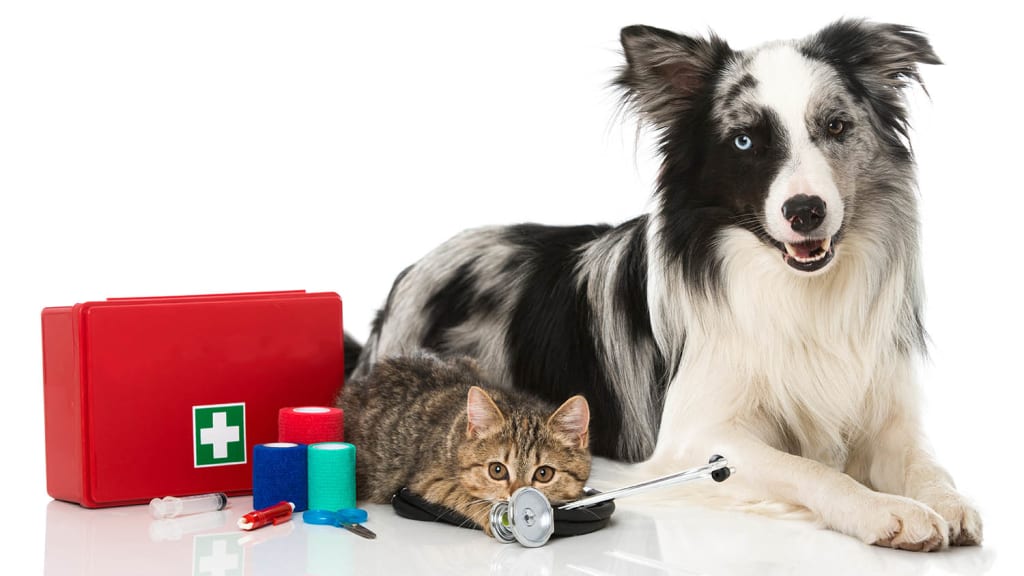
Understanding fundamental first aid procedures can enable you to treat your pet right away. These skills cover things like how to stop bleeding, how to administer CPR, and how to get anything out of your pet's throat.
CPR should be administered if your pet is not breathing or not having a heartbeat. Start chest compressions and rescue breathing while your pet is on a solid surface. Consult a veterinarian as soon as you can. So consult provide the complete guide to puppy first aid.
Having a basic understanding of first aid will enable you to treat your pet right away. These skills include how to stop bleeding, give CPR, and get something out of your pet's throat.
Stopping the bleeding requires applying pressure to the wound with a bandage or clean cloth. If at all feasible, raise the wound above the heart. See a veterinarian right away if the bleeding doesn't stop.
If your pet is not breathing or not having a heartbeat, start CPR right away. Start chest compressions and rescue breathing on your pet while they are lying down on a hard surface. As soon as you can, seek veterinarian attention visit Bookmypet to find best veterinian in Dubai, they also provide Pet Boarding in Abu Dhabi,pet daycare and pet grooming services in Dubai
As a pet owner, it is important to be prepared for emergencies and to know how to provide immediate care to your pet before seeking veterinary attention. Pet first aid is the initial care provided to injured or sick pets to stabilize their condition before professional veterinary care can be administered. In this article, we will discuss everything you need to know about pet first aid.
Basic First Aid Kit
A well-stocked first aid kit for pets should contain items such as gauze, adhesive tape, scissors, antiseptic wipes, saline solution, tweezers, and a digital thermometer. It is important to keep the kit in an easily accessible location in your home or when traveling with your recognizing Signs of Distress
Knowing the signs of distress in pets is essential for pet owners. Symptoms to look out for include difficulty breathing, excessive panting, seizures, loss of consciousness, bleeding, vomiting, and diarrhea. If you notice any of these symptoms, seek veterinary care immediately.
CPR
Cardiopulmonary resuscitation (CPR) can be used to save a pet's life in an emergency situation. CPR involves chest compressions and artificial respiration and should be performed by someone trained in pet CPR. There are many online courses available to learn pet CPR.
Handling an Injured Pet
When handling an injured pet, it is important to remain calm and approach the animal slowly and carefully. Use a muzzle if necessary and keep the animal as still as possible to avoid causing further injury. If possible, use a stretcher or a blanket to move the animal.
Stabilizing a Pet
Stabilizing a pet in an emergency situation may involve applying pressure to a bleeding wound, keeping the animal warm with a blanket, and immobilizing a broken bone. Do not attempt to treat serious injuries on your own - seek veterinary care as soon as possible.
Poisoning
If you suspect your pet has ingested something poisonous, call your veterinarian or a poison control hotline immediately. Do not induce vomiting unless instructed to do so by a professional. The ingestion of certain substances can be fatal, and prompt treatment is critical.
Heatstroke
Heatstroke is a life-threatening condition that can occur in pets during hot weather. Signs of heatstroke include excessive panting, vomiting, diarrhea, and loss of consciousness. Move the pet to a cooler area and apply cool, wet towels to help bring the body temperature down. Seek veterinary care immediately.
Transporting a Pet
Transporting an injured pet to the 24 hour vets in Dubai should be done as quickly and safely as possible. If possible, have someone else drive while you provide first aid to the pet in the backseat. If the pet is unconscious, lay them on its side to prevent choking on saliva or vomit.
Preventing Emergencies
Preventing emergencies is the best way to keep your pet safe and healthy. Keep your pet on a leash or in a carrier when outside, and ensure they are up-to-date on vaccinations and preventive medications. Keep dangerous substances, such as cleaning products and medications, out of reach, and supervise your pet when they are outside.
Seek veterinary care.
Pet first aid is not a substitute for professional veterinary care. If your pet is injured or sick, seek veterinary care immediately. Delaying treatment can result in more severe injuries or illnesses and make treatment more difficult and expensive.
Puppies are cute, cuddly, and a great addition to any family. However, like any living creature, they can experience accidents, injuries, and illnesses. Knowing how
to administer first aid to your puppy can make a big difference
in their survival and recovery. In this article, we will discuss what you need to know about puppy first aid.
It is also important to have a first aid kit specifically designed for dogs, which should include items such as gauze, bandages, antiseptic, and a thermometer. Additionally, it is recommended to take a first aid course specifically designed for dogs, as this will provide you with more in-depth knowledge and skills in handling emergencies.
About the Creator
Bookmypet
BookMyPet is an online marketplace that offers a wide range of pet-related services, including grooming, boarding, daycare and vet services.
Visit Website For more info :- https://www.bookmypet.com






Comments
There are no comments for this story
Be the first to respond and start the conversation.